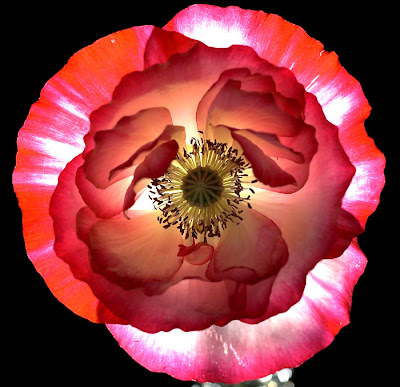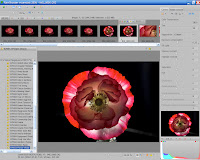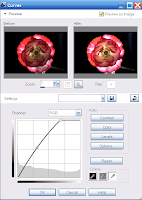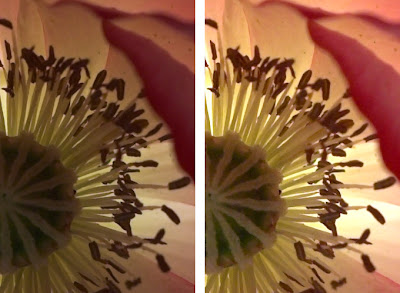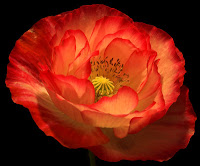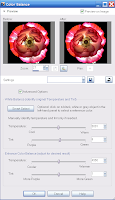 If you are a regular reader of this blog (all two of you) you know I've been hinting at going into business for a while and lately I've been promising a business plan but have been procrastinating intensely. Well, no more, this needs to get done.
If you are a regular reader of this blog (all two of you) you know I've been hinting at going into business for a while and lately I've been promising a business plan but have been procrastinating intensely. Well, no more, this needs to get done.The basic structure is an outline listing what I have, what I need, what I need to get done, and what I need to learn. As I address each issue, I'll put up a separate blog entry but link to it from this page (and link back to this page). That should keep things nice and organized. If I've solved/settled an issue, it will be in green, if it needs to be done, it will be in red (and if it is somewhere in the middle, it will be some other color).
So, how to start? Well, I'll just loosely model it after the example business plan at Bplans.com. For convenience, I'll refer to the 'company' I create as SUPhoto, even though it is pretty much going to be me (and possibly my wife). I tried to make my first draft all business-like, but it didn't seem... right. So, I've adapted it to my blogging voice, but using the basic structure and some of the terms.
Executive Summary:
SUPhoto is an on-location portrait photography company specializing in families and children on or around Stanford campus. SUPhoto will be positioned as an alternative to Sears or Walmart for middle to low income families such as those in Escondido Village on Stanford campus. Above all, the goal is to provide high quality, unique, on location portraits at an affordable price.
As a graduate student on Stanford campus, I feel that there is a big gap between the budget portrait studios like Sears and Walmart and area photographers willing to travel for on-location portraiture. Most of our friends and neighbors stretch to pay the rent each month, let alone pay for portraits once a year, yet all of the families near us have young children and like to do portraits (pressure from relatives and grandparents also helps). I am uniquely situated in contact with a large number of young families, in close proximity to the scenic Stanford campus, and in tune with the financial strain of our prospective clients. Furthermore, the close proximity of my neighbors allows word-of-mouth marketing to be very fast and effective (as past experience has shown -- rumors get around REALLY quickly).
My overall goal is to develop SUPhoto to be a reliable source of part-time income within a year averaging one sitting per week. Ideally, I'd like to get to that point by Christmas season, but I'm unsure if I have the time to do it, especially since I've already got two jobs. I have no desire for a full-time photography company -- I've looked at the numbers, and it seems like a lot of work and I would burn out quickly.
Beyond family photography, I would like to explore/add other specialties such as babies (including in-hospital or in-home) and senior portraits. Senior portraits, in particular, might be easy for me because I already have a lot of contact with juniors in my SAT prep job.
Action Items:
- Determine legality of senior portraits from contacts made in my other job.
- Do a few (free) trial shoots of seniors to see if it is feasible.
- Once established, explore baby photography.
Start-Up Costs:
The good part about location photography is the start-up costs are minimal. If I was trying to build up a studio with strobes, my costs could easily get to be a few thousand before I can even take any portraits. I also have almost everything I need to get started right now, but a few necessities are needed. Honestly, this is a cross between a shopping list and an inventory, but it will help me get organized.
Other than a few more pieces of equipment and a generous donation of time, I have everything I need for minimal shoots.
Camera Equipment:
- Wide-angle zoom: Tamron AF 17-50mm F/2.8
- Telephoto zoom: Canon EF 70-200mm F/4 USM (yes, that is why I bought the lens so quickly)
- 90-100 mm F/2.8 macro prime (ok, who am I kidding, I don't really need this...)
- Super-wide zoom lens (like a 10-22). Not as necessary for portraits, but it could be useful for specialty shots.
- Back-up camera body (or a new primary body): Canon 30D (or 20D). While a new camera body is a big expense, it will prevent me from having to cancel shoots if my camera dies. It will also allow me to have a wide and telephoto lens at my disposal for special events without swapping lenses. Update: I'm planning on a used or refurbished 20D, just need to scrape the money together.
- Carrying bag for camera equipment (lenses, camera, batteries, cards, etc). It needs to protect the equipment, but be easy to carry and give me quick access to the equipment on a shoot.
- Lighting bag to carry lighting gear (if not contained in above).
- A reflector for outdoor shoots not using the sun.
- A second light stand.
- Label maker for the CDs I burn.
- Custom envelopes for print delivery.
- Establish which software to run the viewings in and purchase it if required.
- Establish workflow, back-up, and storage procedures.
Legal Issues:
Luckily, there aren't too many legal issues to worry about, but there are a few things I need to establish:
- Is it legal to photograph on campus without a permit? No, not if I get paid (unless they are Stanford affiliates!).
- If necessary, how do I get a permit? Notify the Communications Office.
- Basic TFCD contract and model release (see here and here).
- Full model release for families, models, and minors.
- Full contract including prices, terms, etc.
- Do I need to declare SUPhoto as a business? What type? What forms do I fill out?
- What tax issues do I need to deal with?
Products and Services:
One of the hardest parts of non-studio photography is to distinguish your shots from snapshots that the client could make. Because they aren't going to pay you much if they think they are just paying for you to use a slightly fancier camera that they could use themselves if they didn't have to be in the picture. But if they know you can get professional looking shots that they can't, they will pay you a premium for that expertise. So it is important for me to distinguish my portraits from 'standard' shots.
Obviously, with my experience, I should get the technicals correct (like exposure or focus) more often than an average Joe (or Jane). I think where I can really distinguish myself is the use of off-camera lighting, which is something average people have no ability to do, and it lends a little something extra to the photo that will catch your eye. The difficult part of that is actually doing the lighting, which I need a LOT more experience with. I'm going to try to do that this summer.
Beyond that, I need to decide what I will (and won't) offer my clients. Definitely, I won't be offering an indoor studio, simply because I don't have one, I don't have space for one, and I don't have the money to rent time in one. That may be something for after my next move, but right now, no.
My basic model will be a sitting fee along with a CD for them to purchase. I feel strongly about giving them full re-print rights to the CD (but not the copyright) and increasing the price of the CD accordingly. I'm not against offering prints, but I won't use prints as a way to make my money like most photographers. With my demographic (educated and frugal families) their BS-o-meter will be triggered if I try to charge them $5 for a 4x6 and tell them if they want any more pictures (or to scan it) they have to pay me more. I'd rather make them pay a little more for the sitting and CD and not count on reprint sales.
Action Items:
- Learn outdoor lighting with reflectors and flashes. And not just a little, I mean really make my pictures pop with it. Probably a great first step will be to go through Strobist's Lighting 102 to force myself to practice the techniques.
- Come up with my sequence. For instance, first we have a pre-shoot chat, then the shoot, then the viewing, then delivery and follow-up. There's a lot of rough edges along the way that I need to smooth to make it better for the client AND save me time and stress.
- Set up a calibrated editing, viewing, and printing system that reliably produces good results. I know how, but haven't done it yet.
- Come up with the valuation of the CD. How much is a CD worth? Should I include all high-res images or only those that they select? How many images should I process for them?
Market Analysis:
Before I set my prices, I really need to figure out what the going rate in the area is. I feel that I can price myself slightly above Sears or Walmart (especially for the sitting fee, since my clients won't pay for reprints). But I'd also like avoid underselling myself too much since it is a business after all.
Furthermore, I really need to know what my target audience (young families) is willing to pay. If I price myself too high, I won't get many clients, but if I price myself too low I'll be undervalued.
Action Items:
- Survey area photographers, specifically on-location family portrait prices.
- Do a similar survey for senior pictures.
- For the TFCD shoots I do for my friends, ask them after the fact (and maybe before) what they'd be willing to pay for my services. That should give me an idea of what a typical family is willing to set aside for portraits.
- Based on the market surveys, determine exactly which services I will offer and what they will cost.
Marketing Strategy:
This one's easy. For now, just word of mouth, e-mailing my friends, and maybe a post on Craigslist. Craigslist or other classifieds, in particular, may not be worth it because there are a lot of photographers posting on there, and in order to do it, I really need a web site...
Also, for each of my TFCD shoots, I'll provide each client with my price list and let them know they got a discount and how much it would have cost them without the discount. Then, when they talk to their friends they have knowledge about my pricing and/or give them a card.
I should also set up a website, but for now, just an entry here might do the job. A more formal website could wait a little while until I've built my portfolio and have time to set it up.
Action Items:
- E-mail friends to set up TFCD shoots before July.
- Create a card.
- Create a price list.
- Create a website.
Financial Plan:
I really have no money to sink into this business since we are just scraping by as it is, so the primary financial rule is to not spend money that I don't have. In a sense I have already done that (by buying my camera equipment) but that's where the line between hobby and business gets really fuzzy. I'm fine with donating time to the cause, but I'm willing to sacrifice the look of a business in order to reach profitability as fast as possible. Initially, profits will be just rolled back into the business (even if it is just to reimburse me for equipment already purchased).
If I can earn enough money from selling within our local area, then it will be time to look into web-site hosting, printing cards, advertising, etc. Mostly, I want to be able to pull the plug within the first year if I decide it is necessary without harming the financial stability of my family.
Action Items:
- Account for cost of all equipment and software purchased so far, so that I can include that in the cost of doing business and reimburse myself for those expenditures.
- Create an accounting spreadsheet (or system of spreadsheets). Alternatively, identify free or inexpensive accounting software I could use for that purpose..
- Determine the cost of doing business for bare-bones shoots. This includes equipment costs, my time, gas, CDs, printing costs, etc. This number is necessary to make sure I am not losing money just by staying in business.
- Determine break-even point. How many shoots do I need to do to stay in business? What if I expand?
- Project into next year so nothing catches me by surprise.
- Determine tax law, what needs to be reported, and what deductions I can make for SUPhoto business expenses. Did you hear that IRS? I'm not doing this under the table (well, unless I only do one or two shoots and give up).
Personnel:
Obviously, I'll be employed part-time by SUPhoto, but what about an assistant? I used to think an assistant was a luxury, but after doing two shoots, I realize just how helpful it would be to have someone to set up and keep an extra set of eyes to let me focus more on the portraits and poses. It would also speed the shoot up and make the clients feel more comfortable. But, obviously, finding good help willing to work for very
little money is hard.
My wife has offered and part of me thinks it is a great idea, and part of me is a little worried. On one hand, she's detail oriented, can do make-up, and could be very helpful. On the other hand, we're both used to being in charge and I'm concerned we might clash a little bit (mostly because I have trouble giving up control). The biggest problem: if my wife and I are on a shoot, where are our two children? Having my two kids on a shoot would be way more stress and trouble than any benefit to having my wife there. So we'd need a babysitter, but if we can't find one that will work for free or a swap, it probably won't be cost-effective.
Action Items:
- Take my wife on a shoot to see how it goes.
- Determine the value of having an assistant on a shoot -- would a local teen be able to help? What can I afford to pay?























